
Ten University of Notre Dame faculty members have been named fellows of the American Association for the Advancement of Science (AAAS) in honor of their scientifically or socially distinguished efforts to advance science or its applications.
AAAS, founded in 1848 as a nonprofit association, is the world’s largest scientific society and publisher of the prestigious journal Science.
The new Notre Dame AAAS fellows are: Joan Brennecke, Keating-Crawford Professor of Chemical and Biomolecular Engineering; Agustin Fuentes, professor of anthropology; Kasturi Haldar, Julius Nieuwland Professor of Biological Sciences and Parsons-Quinn Director of the Center for Rare and Neglected Diseases; Prashant Kamat, Rev. John A. Zahm Professor of Science in the Department of Chemistry and Biochemistry and Radiation Laboratory and concurrent professor of chemical and biomolecular engineering; David M. Lodge, professor of biological sciences and director of the Notre Dame Environmental Change Initiative; Edward J. Maginn, professor of chemical and biomolecular engineering; Marvin J. Miller, George and Winifred Clark Professor of Chemistry and Biochemistry; William F. Schneider, professor of chemical and biomolecular engineering; Anthony S. Serianni, professor of chemistry and biochemistry; and Bradley D. Smith, Emil T. Hoffman Professor of Chemistry and Biochemistry.
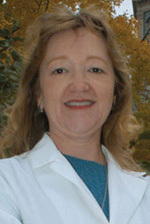
Brennecke, a member of the Notre Dame faculty since 1994, was cited for “distinguished contributions to the understanding of the thermodynamics and molecular behavior of supercritical solutions and their application to environmentally benign process technologies.” Internationally known for her research in the development of solvents, specifically supercritical fluids and ionic liquids, Brennecke’s research interests include supercritical fluid technology, ionic liquids, thermodynamics, environmentally benign chemical processing, and carbon dioxide separation, storage and usage.
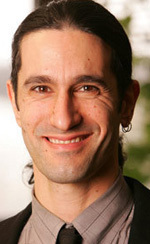
Fuentes, who joined the Notre Dame faculty in 2002, was cited for “distinguished contributions to field primatology and physical anthropology, particularly for his research in field primatology and the evolution of primate and human behavior.” He examines human evolution from several perspectives and his research sheds light on some of the most common misperceptions about human nature, specifically in the areas of race, sex and aggression.
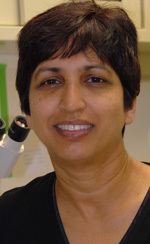
Haldar, a member of the Notre Dame faculty since 2008, was cited for “distinguished contributions in the field of microbiology, particularly malaria, and as Editor-in-Chief of PLoS Pathogens.” She focuses on understanding cell function and cerebral disease in murine models that are important areas for discovering disease treatments. Her identification of how the malaria parasite attacks red blood cells revealed that a common blood pressure drug can be used to treat the disease, preventing the parasite from invading the cell.

A member of the Notre Dame faculty since 1983, Kamat was cited for “distinguished contributions to the field of photo-electrochemistry, especially in elucidating the fundamental electron transfer process in semiconductor nanostructure based solar cells.” His research has made many contributions to the areas of photo-induced catalytic reactions and design of next generation solar cells using semiconductor and metal nanoparticles, nanostructures and nanocomposites, advanced materials such as inorganic-organic hybrid assemblies for utilizing renewable energy resources, and environmental remediation.
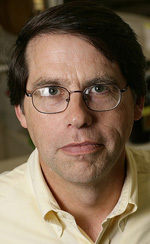
Lodge, a member of the Notre Dame faculty since 1985, was cited for “distinguished contributions in the field of conservation biology, and leadership of interdisciplinary research instrumental in improved management and policy of invasive species.” Lodge served as the first chair of the national Invasive Species Advisory Committee and was the lead author of the Ecological Society of America’s paper calling for a stronger government response to the problem of invasive species. As part of the Millennium Ecosystem Assessment sponsored by the United Nations, he led global analyses of current and potential future losses of freshwater biodiversity in response to climate change and human consumption of water.
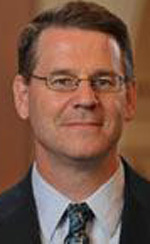
Maginn, who joined the Notre Dame faculty in 1995, was cited for “distinguished contributions to increased energy conversion efficiency and ‘green’ chemistry through the computational simulation and modeling of the characterization, synthesis and behavior of ionic liquids.” His research focuses on computational statistical thermodynamics, in which atomistic-level computational methods are developed and utilized to obtain a fundamental understanding of the link between the physical properties of materials and their chemical constitution. Much of his work is devoted to environmental and energy-related applications.
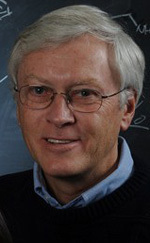
Miller, a member of the Notre Dame faculty since 1977, was cited for “distinguished contributions to the advancement of the fields of organic chemistry and medicinal chemistry and for selfless service to the profession.” His primary research interests are in synthetic and bioorganic chemistry. His research focuses on the development of new methodology and its incorporation into the synthesis and study of biologically important nitrogen-containing compounds with special emphasis on the hydroxamic acid-containing microbial iron transport agents, amino acids, peptides, carbocylic nucleosides, B-lactam antibiotics, antifungal and antitumor agents.
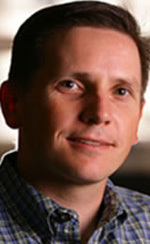
Schneider, who joined the Notre Dame faculty in 2004, was cited for “the development and application of powerful new computational approaches yielding fundamental insights into reaction dynamics and catalysts at complex surfaces and nanomaterials.” His research interests are in the area of first-principles quantum mechanical simulation of catalytic reactivity at solid surfaces. This heterogeneous catalysis is a key element of virtually every aspect of the energy enterprise, from the preparation of clean fuels from crude oil or coal, to the transformation of chemicals into electrical energy in fuel cells, to the remediation of exhaust from fossil fuel combustion, to even the sequestration of CO2 via mineralization.
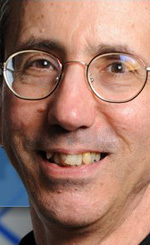
A Notre Dame faculty member since 1982, Serianni was cited for “distinguished contributions to the field of carbohydrate biochemistry, particularly for novel applications of NMR spectroscopy and stable isotopes to characterize saccharide structures in solution.” His research focuses on the use of stable isotopically-labeled compounds to examine structure, conformation and reactivity of carbohydrates and nucleic acids in solution using modern NMR methods and computational techniques.
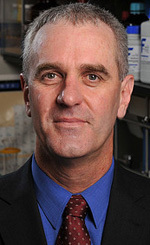
Smith, who joined the Notre Dame faculty in 1991, was cited for “distinguished contributions to the field of supramolecular chemistry, particularly for the creation of small molecules that selectively target biological membranes.” Smith’s general research areas are bioorganic and supramolecular chemistry, but the research projects are diverse and encompass topics such as organic synthesis, membrane biophysics, photochemistry, and small animal imaging. A major aim of his research is to develop novel fluorescent and chemiluminescent imaging probes that can detect dying cells in culture and tumors and bacterial infection in living animals.
The tradition of AAAS fellows began in 1874 and this year the association is honoring 503 individuals as fellows. Currently, members can be considered for the rank of fellow if nominated by the steering group of their respective sections, by three fellows, or by the Association’s chief executive officer. Each steering group then reviews the nominations of individuals within its respective section and forwards a final list to the AAAS Council.
The AAAS Council votes on the final aggregate list. The Council is the policymaking body of the Association, chaired by the president, and consisting of the members of the board of directors, the retiring section chairs, delegates from each electorate and each regional division, and two delegates from the National Academies of Science.
The ten new Notre Dame fellows will be presented with an official certificate and gold and blue (representing science and engineering, respectively) rosette pins on Feb. 19 during the 2011 AAAS annual meeting in Washington, D.C.
Originally published by at newsinfo.nd.edu on January 19, 2011.